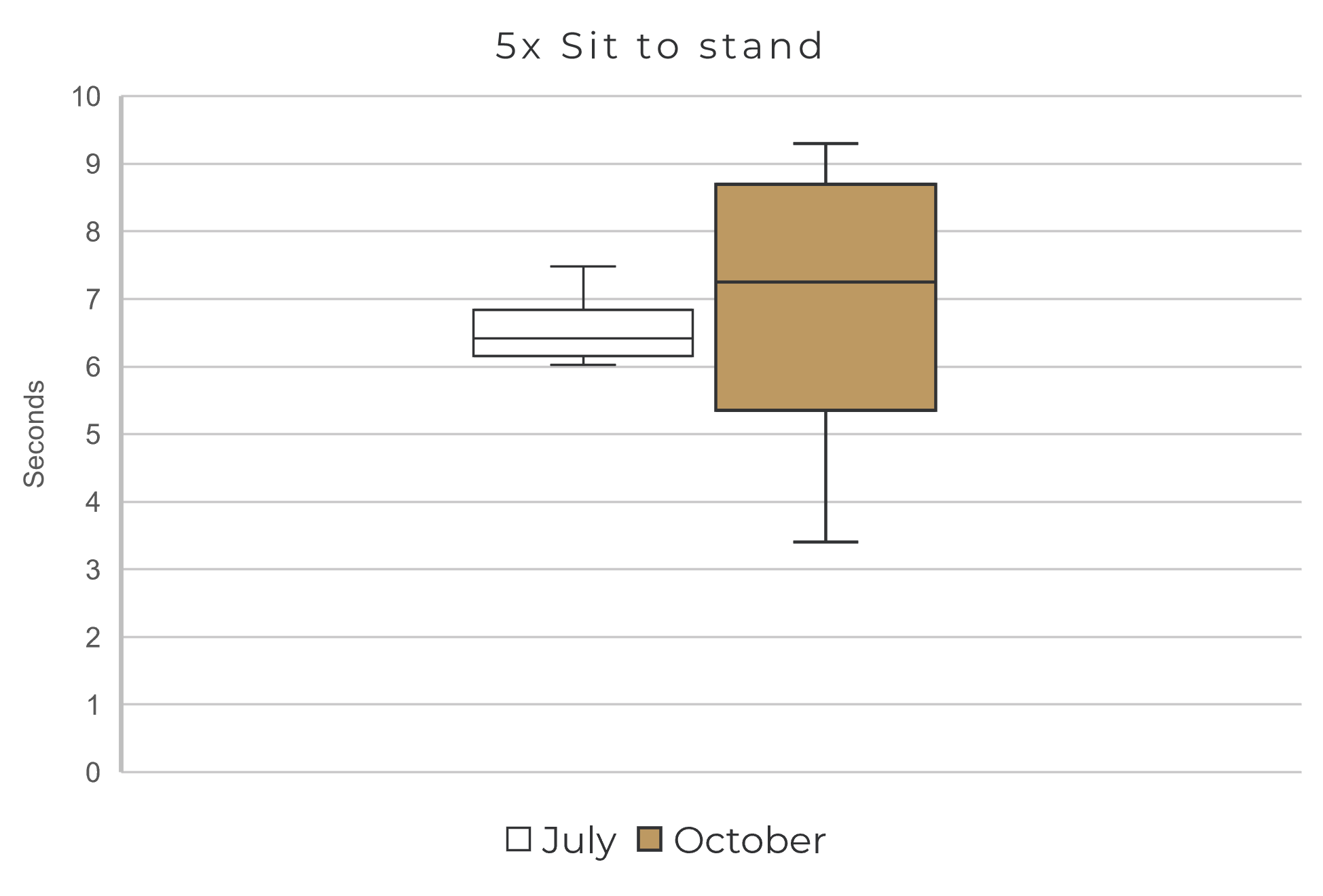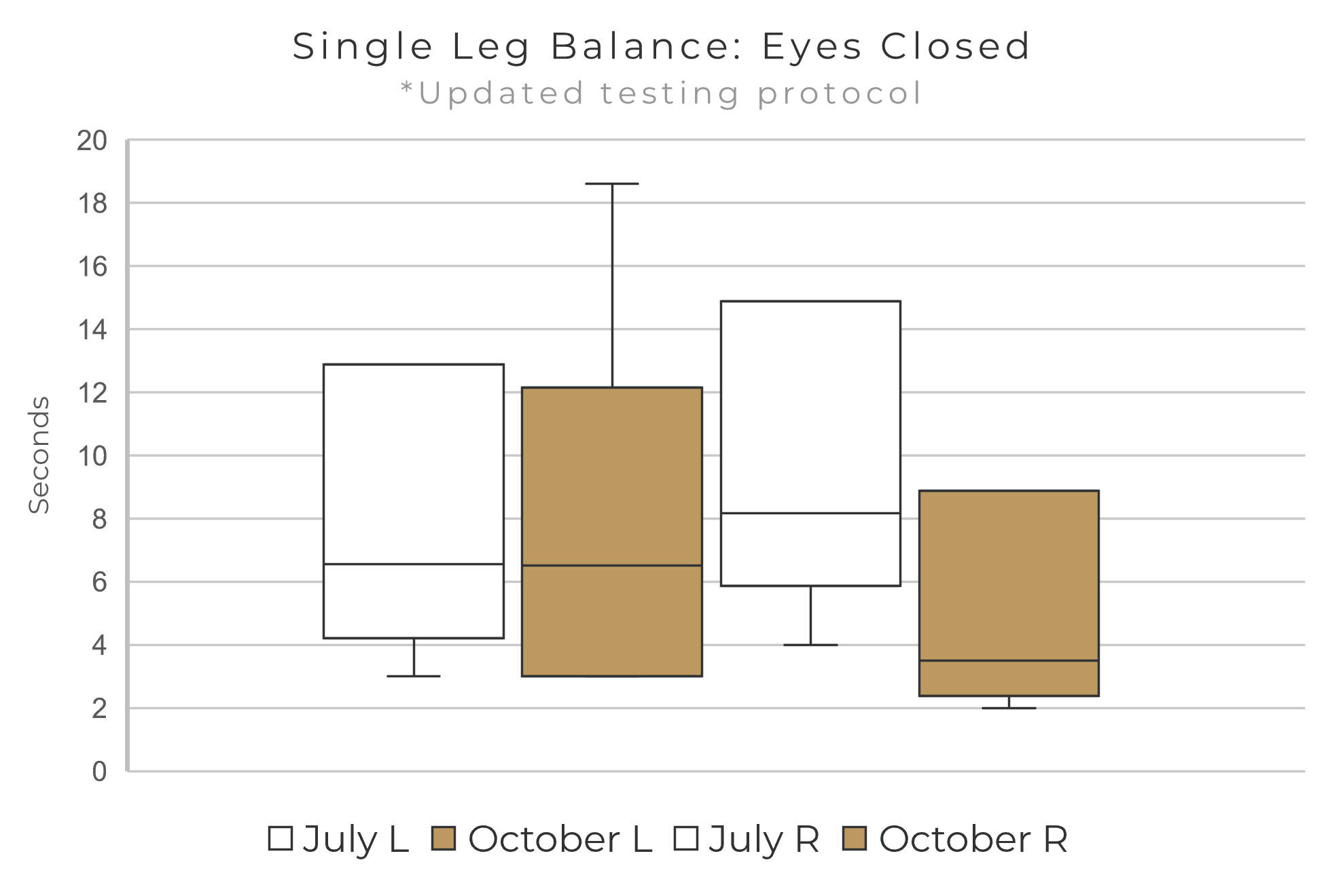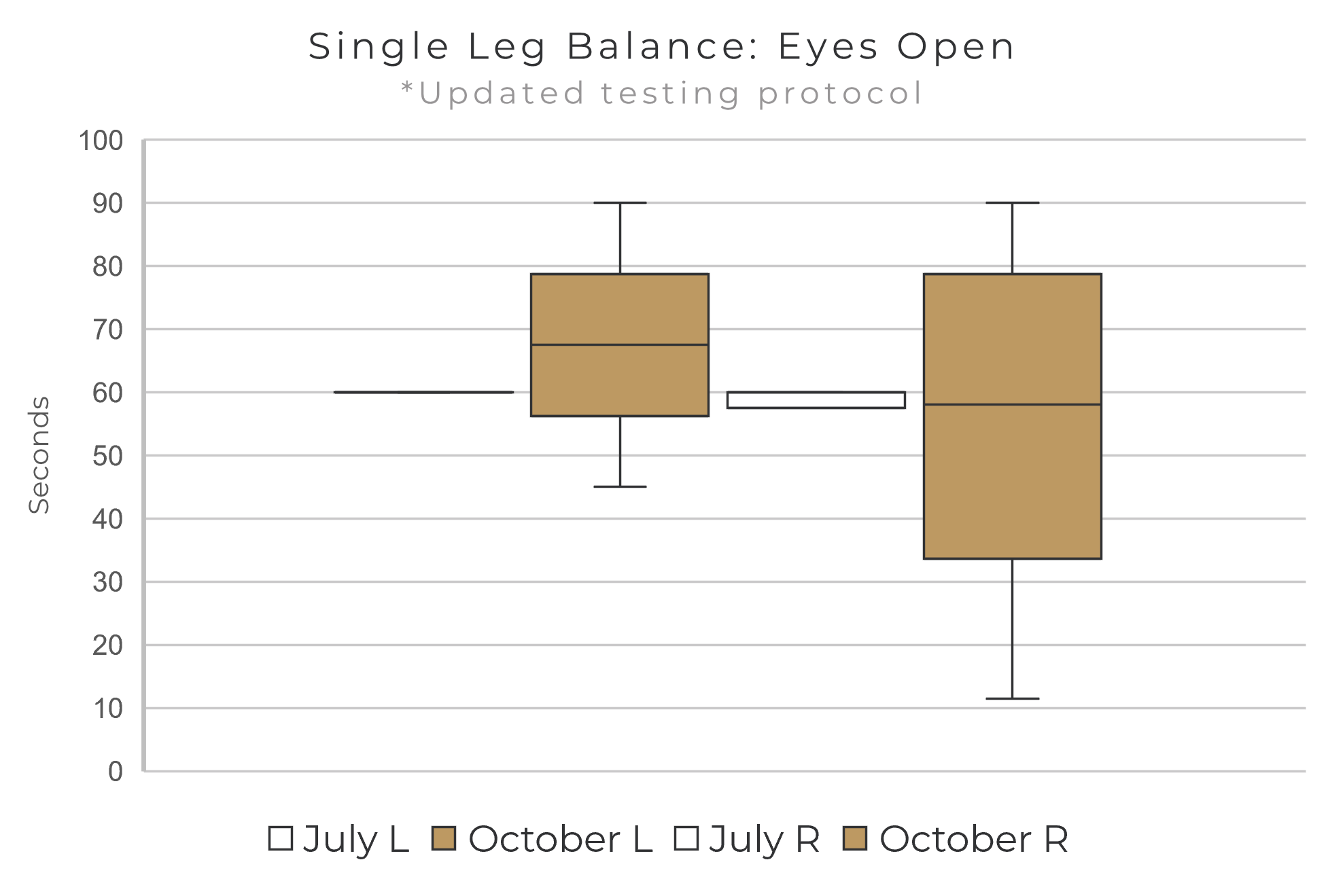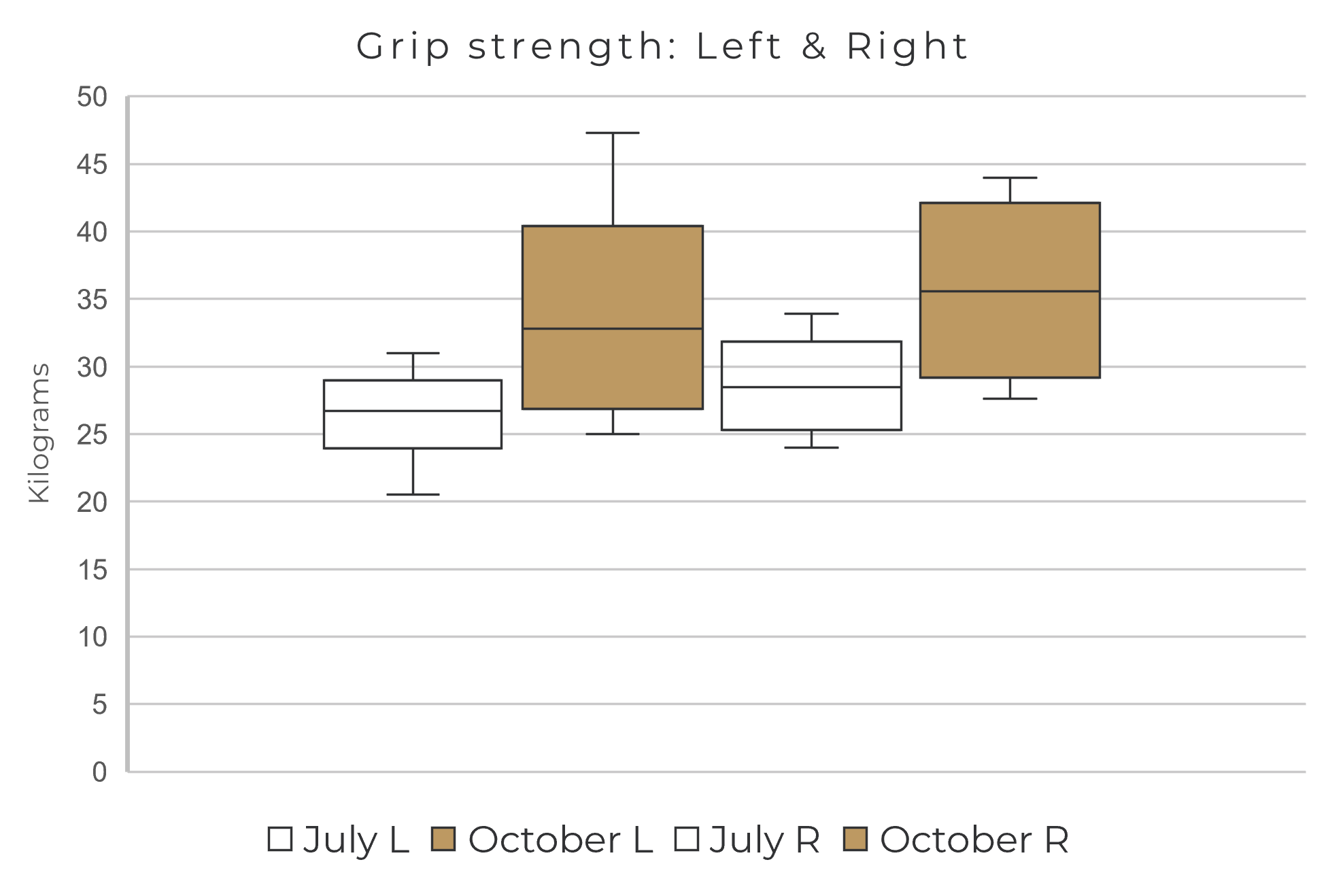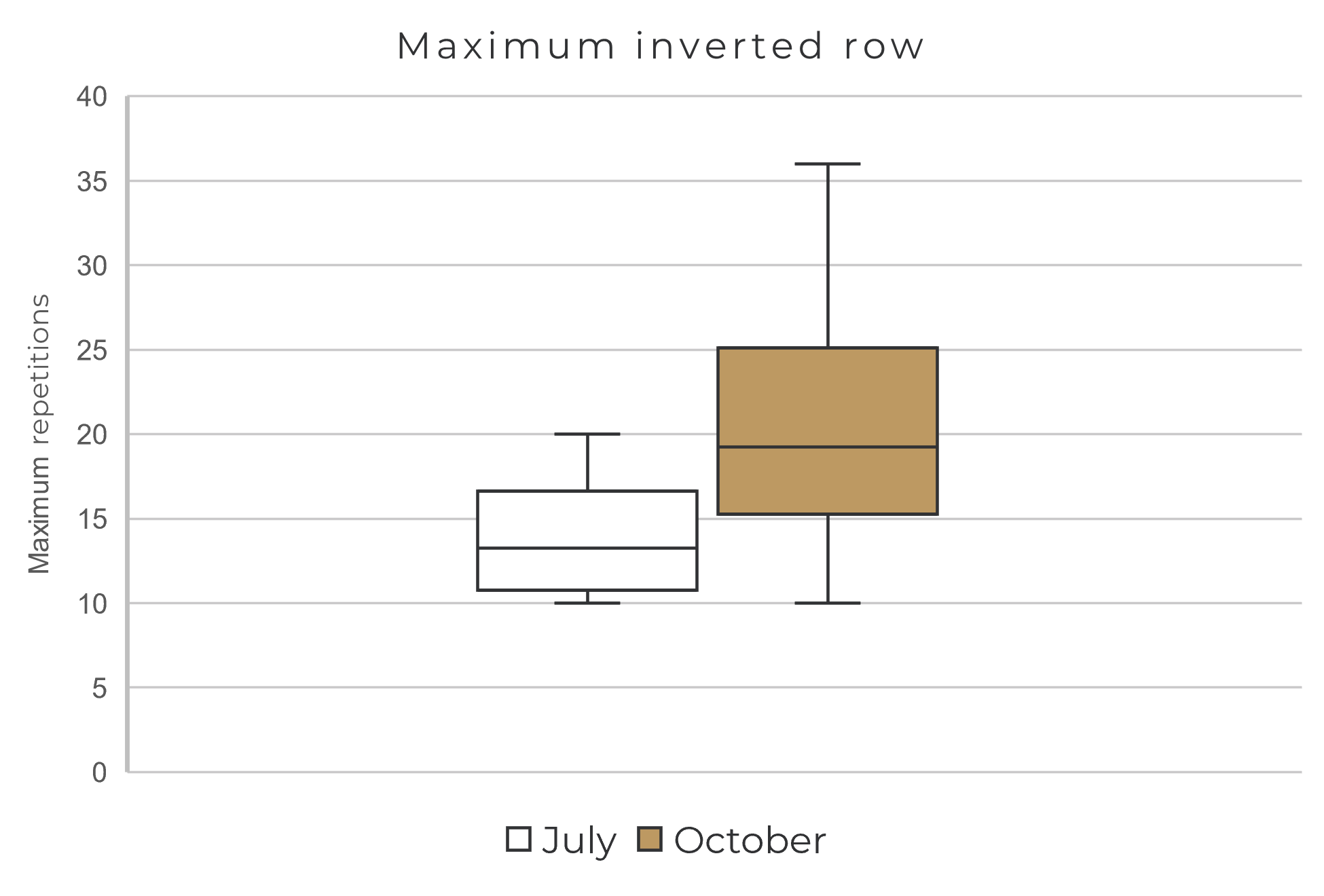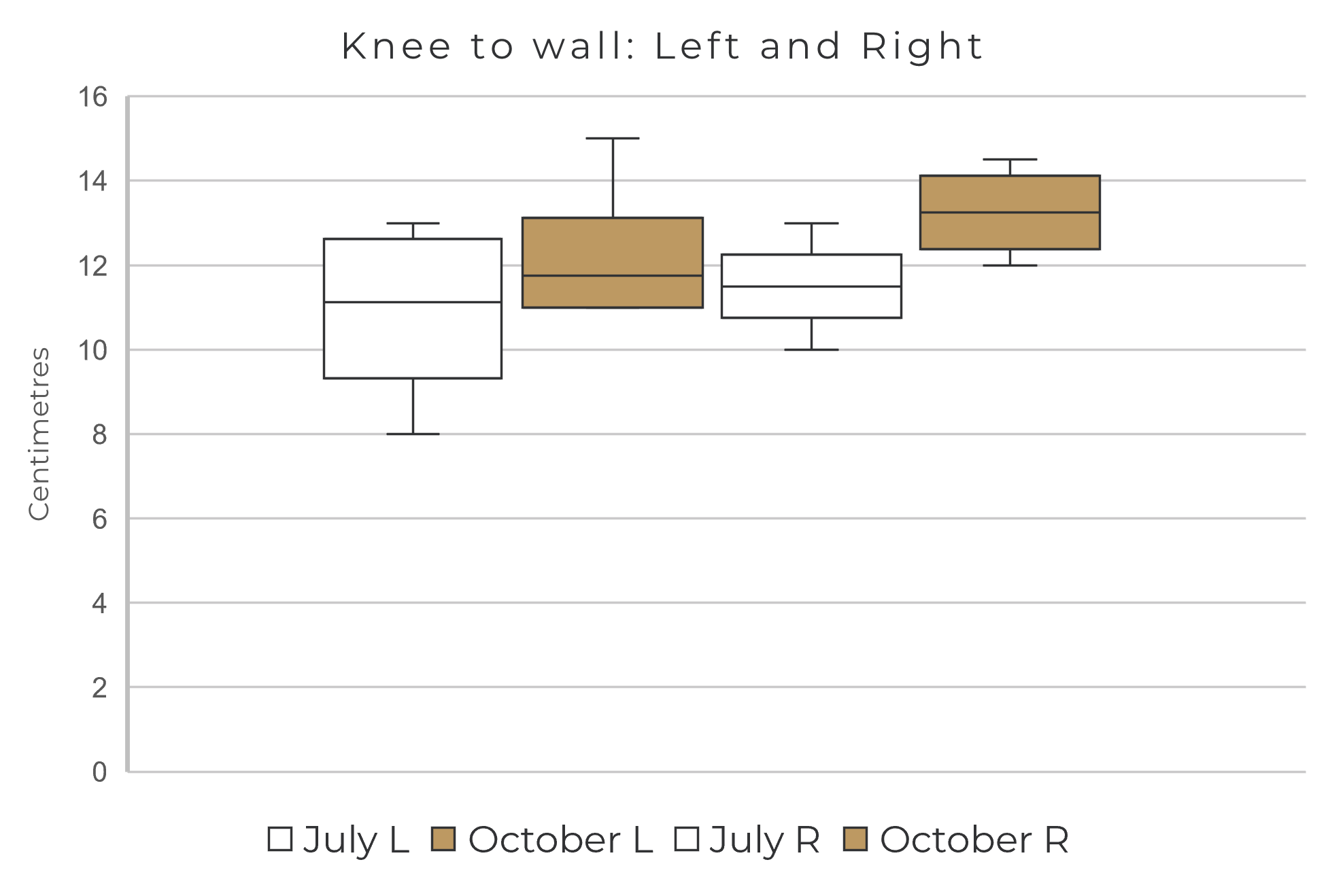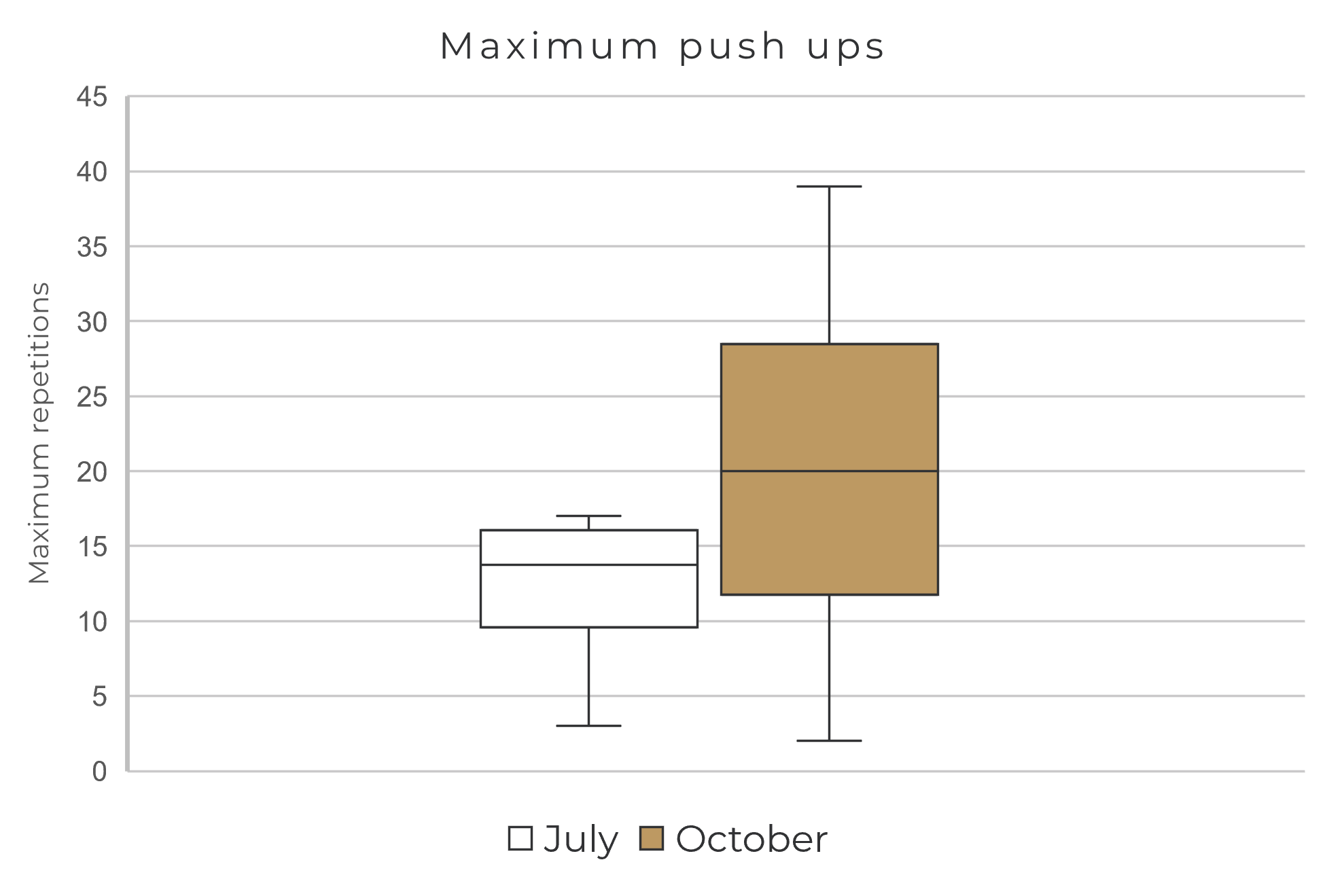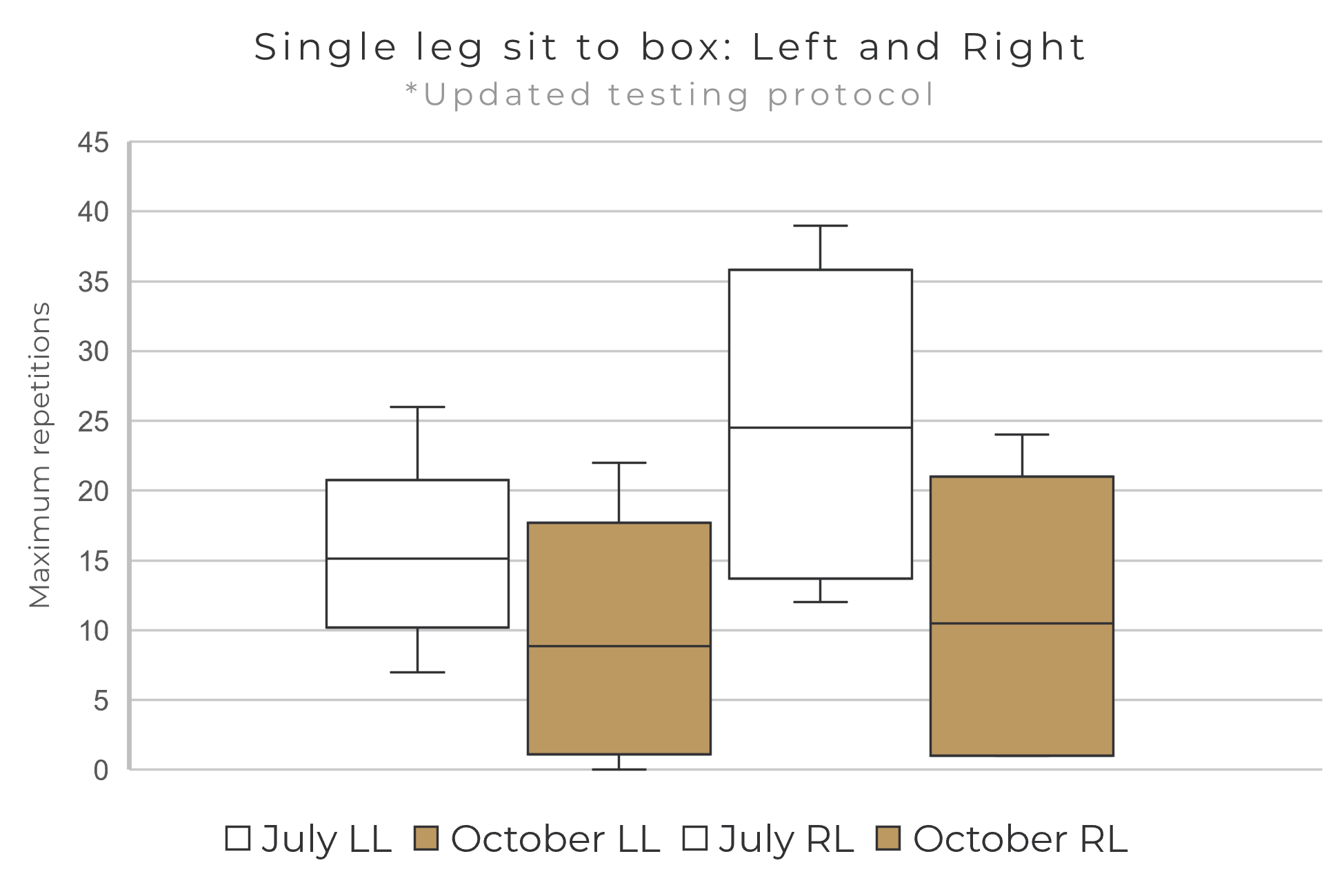Welcome to Fit Over 50s
The Fit Over 50’s program is designed to enhance the mental and physical health of people over 50.
Unlock the fountain of youth, transform your golden years, and reclaim vitality by embracing the power of exercise - rewrite the story of aging for a stronger, healthier you!
Our team of exercise physiologists and scientists factor personal details into programs that are flexible, social, engaging and effective. We account for the unique history, pathology, injury and concern of each individual.
The group program has intermediate & advanced levels and considers injuries, aches, pains and all levels of fitness.
With programs that target strength, mobility, balance & cardiovascular fitness, we’ve got all your health and fitness needs covered.
Hear what our members have to say about the program.
Why Fit over 50s?
Key physical benefits of the program
Builds stronger bones
Reduces risk of health conditions such as cardiovascular disease, osteoporosis and diabetes
Prevents future injuries
Increases social wellbeing and community building
The classes are always engaging and different
There is a big focus on community and social well-being, with post-class chats and coffees each day
Helps alleviate muscle and joint soreness
Improves mental well-being
Enhances quality of life through new skills and challenges
How it works?
As a Fit over 50s member you get unlimited access to our group fitness program.
Every over 50s member gets a FREE movement assessment (quarterly).
Choose from two major class types, beginner and intermediate.
Fit Over 50s specific class are every week day at 10am.
Claimable on private health (pending provider & level of cover).
New program every 4 weeks.
Our results do the talking.
We ran a range of tests focusing on a broad range of basic measurements from clients of our Fit over 50s program, corresponding with health and fitness.
The three categories tested were strength (broken into endurance and absolute), metabolic fitness and range of motion.
Below is a breakdown of the data of our major tests.
-
Grip strength is considered as an “indispensable biomarker”. Research suggests that grip strength is largely consistent as an explanator of concurrent overall strength, upper limb function, bone mineral density, fractures, falls, malnutrition, cognitive impairment, depression, sleep problems, diabetes, multimorbidity, and quality of life. Evidence is also provided for a predictive link between grip strength and all-cause and disease-specific mortality, future function, bone mineral density, fractures, cognition and depression, and problems associated with hospitalization.
We saw an impressive improvement in grip strength of all the repeat testers between our July 2021 and October 2021 testing data with an average increase of 10kg on both hands of those who tested.
-
IMTP is typically a test used in athletic populations to measure lower limb power output. IMTP requires the use of force plates and specific set up criteria for reliable and valid measurements. At Science Of Fitness we use Vald Performance Force Decks to conduct the IMTP test.
Ironically very little evidence exists in the use of IMTP with older populations. However, it is well documented that IMTP is an effective measurement of performance in athletic populations.
We saw a significant improvement in the results of our Fit over 50s clients in the IMTP test. Average power output increased by roughly 250N across the group between the July to October testing dates.
-
Evidence suggests that effectively executing an inverted row assists with shoulder joint health as well as firing of back extensor muscles both of which are crucial for postural health.
The inverted row is regularly prescribed in strength training programs. We used the inverted row as a measure of upper body strength endurance as it has an influence on broth grips strength musculature and key postural muscles of the back extensors and scapular retractors.
We saw a significant increase in the maximal repetition of our testing subjects from 12 repetitions to 20 repetitions.
-
One of the most popular studies titled the “Association Between Push-up Exercise Capacity and Future Cardiovascular Events Among Active Adult Men” details the correlation between upper body strength and lower risk and mortality rates associated with cardiovascular disease (the largest cause of mortality in the western world).
This evidence is one of the main motivators for us to measure the upper body strength of the participants in our Fit over 50s program.
We found a significant improvement in push up ability in our participants from an average of 12 reps to 20 reps over the three month training period.
-
It is well researched that aging has a negative effect on anaerobic capacity. Majority of our programming deals with strength base anaerobic output. We introduced anaerobic conditioning (metabolic conditioning training glycolytic energy systems) as part of our program to train the second phase of anaerobic energy system. This is to improve resting metabolic rate, insulin sensitivity and general metabolic conditioning of our clients.
Rowing is considered as one of the more demanding exercises because of the use of a number of the largest muscles in the human body (both upper and lower body). By completing a 500m sprint on a Concept2 rowing machine we get a good understanding of the ATP-Pc and Glycolytic energy systems of our clients as the bouts usually take between 1:50-2:30min.
Over the 3month period we saw a drastic improvement in rowing ability and a decrease in coefficient of variation (CV) of subjects. With the average time spent down from 2:08/500m to 1:58/500m.
-
Dorsiflexion ROM limitation is associated with ankle injuries, foot pain, lower limb disorders, loss of balance, gait control disorders and fall risk in older adults.
We saw a reduction in CV as well as a significant increase in ROM
Fit Over 50s blog



